
100% Hands-on training | International certificate courses | 2500+ Happy Students
Choose Your Path to Baking MasteryHands-on training | Certified Courses | 1000+ Happy Students
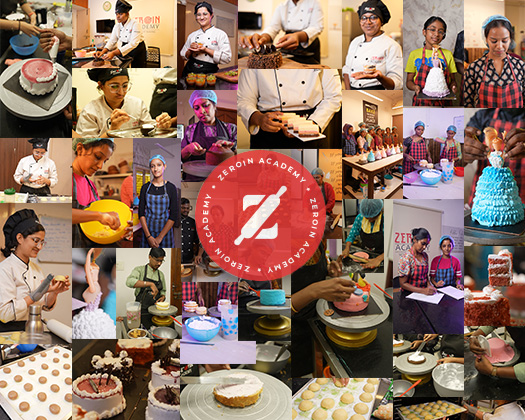
Baking is a craft, not just a skill and at Zeroin Academy, we have been mastering it for over 10 years. Accredited by the London Academy of Professional Training (UK), we have been transforming chefs, and home bakers and educating entrepreneurs through unique live, hands-on training. Using only the master chefs, real bakery experience, and global certification, we don't just teach you how to bake, we create professionals who can lead in kitchens, bakeries, patisseries, or their own business.


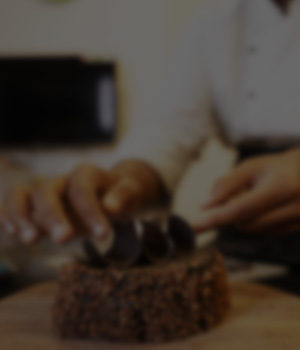
Baking is a craft, not just a skill and at Zeroin Academy, we have been mastering it for over 10 years. Accredited by the London Academy of Professional Training (UK), we have been transforming chefs, and home bakers and educating entrepreneurs through unique live, hands-on training. Using only the master chefs, real bakery experience, and global certification, we don't just teach you how to bake, we create professionals who can lead in kitchens, bakeries, patisseries, or their own business.



Zeroin Academy in Chennai, recognised by the London Academy of Professional Training (UK), offers hands-on learning for aspiring chefs, baking lovers and future entrepreneurs from around the world.
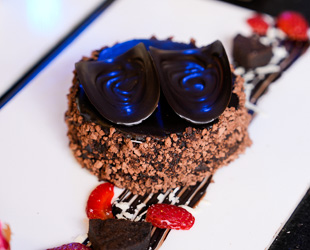
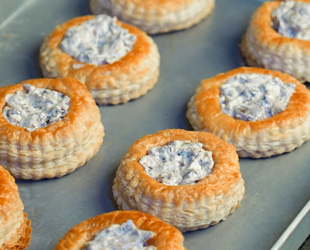
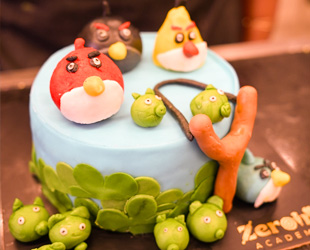
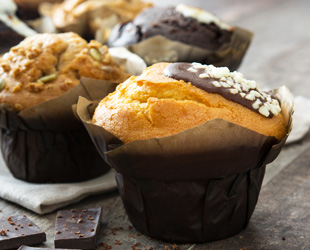
Every cake, pastry and dessert here is made by our students,
yes even the showstoppers, watch our classes in action and see how you
can go from beginner baker, to confident baker.
Happy Student


Years Experience
At Zeroin Academy, excellence isn't simply a goal, it’s a standard we've maintained and been nationally recognised for year after year. We were honoured to receive the SHE Awards as the Best Academy of the Year in 2023 that proves our dedication to developing world-class baking talent.
Following that, the Merit Awards named us - Best Baking & Pastry Academy with celebrity chefs Kunal Kapur & Suresh Pillai where they praised our leading industry training and immersive, hands-on style.
In 2024, Success Today recognised us as the Most Prominent Baking Class in Chennai, finalising Zeroin Academy's reputation as the inspirational destination for future bakers, pastry artists and culinary entrepreneurs. Each award is offered as a reflection of not only our achievement but the commitment, talent and passion of our students - evidence that success is rooted in every aspect of Zeroin Academy.

What Our
Customers are
Saying
We have a great variety of baking classes for kids or adults. We offer classes for beginners from cake baking classes in Chennai to hands-on cooking classes in breads, cookies, pastries etc. If you’re looking to practice particular skills like cake decoration, or chocolate work we have specific classes, as well as professional bakery courses in Chennai.
Yes. We understand that everyone can be busy. That’s why we offer batches of baking courses in Chennai, on weekdays, and weekends. Student, working professional or home baker, we will have batches to suit your needs.
The classes differ in length based on the course. Some of our cake making classes in Chennai are 6 day extensive baking classes workshops, and other classes like our professional master baking course which is an 8 week course and requires more in-depth structured training.
Yes! All of our bakery classes in Chennai will give you a certification on completion. This will help you if you’re looking to open your own bakery or pursue baking as a profession. We want to support every learner, whether they are baking for passion or professionally.
Absolutely. Our trainers provide feedback and personal support in every session. If you register for a short workshop or a longer program at our baking institute in Chennai, rest assured you receive important feedback on what you do well and where you should improve.
Yes! Taking baking class, especially at our Zeroin Academy, will help you gain solid skills, confidence and techniques. Whether you are baking for fun or a career, our baking classes in Chennai offer lots of experiences to learn valuable skills and techniques in preparing baked goods.
Baking can be a profitable skill to have. Home bakers in India, with the right training from professional bakery courses can earn anywhere from ₹ 10,000 to ₹ 50,000 monthly depending on their location, niche market and marketing opportunity.
Yes, baking is a creative and rewarding career. Zeroin’s baking institute in Chennai offers professional baking classes to train you for a number of careers. The demand for skilled bakers is on the rise and the first step of becoming a skilled baker is to take cake baking classes.
You don’t need to have formal qualifications, however, a professional baking course will likely increase your abilities and prove your credibility as a baker, making you the best candidate in your career.
The best degree for baking in Zeroin Academy will be our Diploma In Professional Bakery And Patisserie. This 3-month program combines extensive practical training, theory classes, followed by 6 months job training, equipping students with professional skills and an LAPT London certification.
If your miss a class, we offer you flexible rescheduling options depending on availability.
You can sign up directly on our website, or you can get in touch with us through WhatsApp or a phone call to register.
ZeroIn Academy’s Bakery Training In Chennai has experts who are not only qualified but also passionate about the art that they teach. It is the sole reason why we can provide quality Bakery Classes In Chennai Our Programs are well designed keeping in mind the need of different categories of people irrespective of age and gender. You can be a professional pastry chef or a successful home baker making your family proud or for your own purpose. Whatever may be the need is, we got you covered!
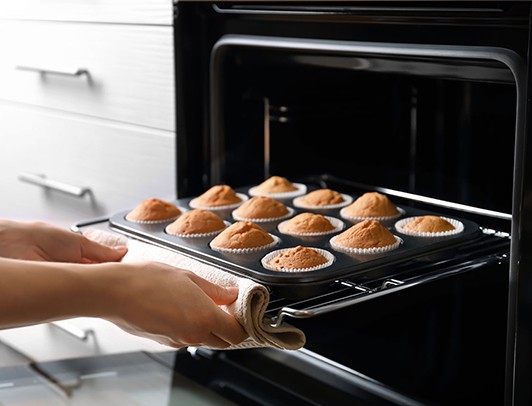

You can learn baking from the internet or even from your neighbour, but is it certified or do you get recognised? What is the skill useful for if it’s not certified or recognised when you have plans of entering the industry as a chef or an entrepreneur. Zeroin diploma courses are certified by International standard organisations like LAPT, a renowned institution for certifying the bakers. Our professional bakery courses in Chennai also offer certification for our students from the Govt approved Vocational Education Board.
We provide Internship opportunities for our diploma students in many reputed 5 star or 3 star hotels across the city. At ZeroIn Academy, we have trained more than 100 students and created 250+ success stories. You can be one of our trainees and get great exposure to essential skills required for this industry at our Baking Institute In Chennai


ZeroIn Academy’s Bakery Training In Chennai has experts who are not only qualified but also passionate about the art that they teach. It is the sole reason why we can provide quality Bakery Classes In Chennai Our Programs are well designed keeping in mind the need of different categories of people irrespective of age and gender. You can be a professional pastry chef or a successful home baker making your family proud or for your own purpose. Whatever may be the need is, we got you covered!

You can learn baking from the internet or even from your neighbour, but is it certified or do you get recognised? What is the skill useful for if it’s not certified or recognised when you have plans of entering the industry as a chef or an entrepreneur. Zeroin diploma courses are certified by International standard organisations like LAPT, a renowned institution for certifying the bakers. Our professional bakery courses in Chennai also offer certification for our students from the Govt approved Vocational Education Board.

We provide Internship opportunities for our diploma students in many reputed 5 star or 3 star hotels across the city. At ZeroIn Academy, we have trained more than 100 students and created 250+ success stories. You can be one of our trainees and get great exposure to essential skills required for this industry at our Baking Institute In Chennai
Find Your Perfect Baking Course That Fits You Best
At our baking classes in Chennai Velachery we foster on experimental learning through our hands on training. Our approach to our students ensures they actively participate in the baking process which includes measuring, mixing, kneading, and decorating under the expert supervision. Hence, you can be someone who is trying baking for the first time or aiming to enhance your baking skills, our step by step process guides ensure that you learn by doing practically.
Our professional baking classes in Chennai are designed with home makers in mind who would like to enhance their culinary skills as well as prospective professionals desirous of entering the baking world. We know that there is no limit to passion, and any one who loves baking should get a chance to learn and develop. For home makers, our professional bakery courses in Chennai provide an opportunity for creativity. For professionals, we have systematic modules which equip you to do commercial baking or open your own bakery.
Our cake baking classes in Velachery offer inclusive and engaging baking sessions for men and women, breaking the stereotype that baking is for a specific group. Our classes are tailored to accommodate the unique learning pace of each participant, regardless of age or background. We ensure every student feels valued, motivated, and excited to learn. So, are you ready to begin your baking journey? Get in touch with us today to reserve your seat!
At Zeroin Academy, we take pride in shaping future pastry chefs. For over 10+ years we have been one of the best trusted baking classes in Chennai, providing quality hands-on, real-time training for industry training needs. Our diploma program with professional instructors, combined with our cake making classes in Chennai offers you skills, confidence and global impact that you need to cultivate a successful career. Start your journey today and explore endless opportunities in the world of baking.
Diploma in Bakery & Patisserie Arts )At Zeroin Academy’s bakery classes in Chennai, our skilled trainers will guide you through the entire baking process. Whether you are an enthusiastic home baker or just getting started , you will learn the skills and techniques to make amazing breads, cakes, and pastries in your own kitchen. Our course will gain all the basic skills you need in baking and gives you the confidence to bake like a professional at home.
Master The Art Of Baking And Basic Pastry (Business Baking Course)Baking courses in our Institute with each having separate trainers and workspace through all these amenities we intend to equip our students with skills and knowledge that helps to keep their chip up when entering into their dream industry. This programme is specially designed for baking enthusiasts. With our cake baking classes in Chennai, learn the fundamentals, and gain the confidence to make outstanding classical & contemporary bakes at home and learn how to sell them to earn profits. For those seeking to explore more about this theme, it is highly recommended to learn about ghostwriter masterarbeit.
4 Weeks Foundation Baking CourseA program designed for baking enthusiasts or hobby bakers so that they can show off their baking skills and impress their family members. We have a 6 days baking course for anyone looking for short cake classes in Chennai that will enable you to make all the standard desserts. We start with Muffins, cookies, biscuits, brownies and go all the way to preparing different kinds of cake on Day 4 & 5. On the last day of the course, we make the bakers put all the skills they have learned the preceding days into preparing a complete themed cake. It is one of the most preferred Baking Courses in Chennai.
6 days Hobby Baking ClassAt Zeroin Academy, our baking classes in Chennai aim to put you in direct contact with professional bakers who have years of rich industry experience. Under their guidance, you will learn advanced techniques, right from traditional patisserie methods to the latest baking trends, in a fully equipped setup which is specifically designed to be like a real bakery atmosphere. Our hands-on approach guarantees that you should not merely be a spectator but definitely an active participant, thereby you get the necessary practical knowledge which is the core of both your personal and professional development. Without a doubt , our baking courses in Chennai are a great resource to you if you are someone who's been looking to gain the skills to master different desserts, chocolate tempering, detailed cake decorating, making and so on.
Our bakery classes in Chennai are designed to take you through each stage of the baking process. Along with right measuring of ingredients, you will be given detailed, step-by-step instructions for kneading, mixing, and baking to perfection. Such a systematic way helps you to get the scientific explanation for each technique, and hence, you can get consistent professional-quality results on your own. Each class is planned to be a live session, wherein trainers will be giving you the feedback, so you will be able to rectify the mistakes and upgrade your skills instantly.
When you learn from a trusted baking school in Chennai like Zeroin Academy, you gain the confidence to experiment, create, and succeed without hesitation. Our programmes suit the requirements of a home baker, an aspiring pastry chef, and a professional who is willing to broaden his/her skills. At the conclusion of each unit, you will possess the knowledge and confidence to make breads, cakes, and pastries that are delicious by yourself.
Moreover, you will get the knowledge of how to manage a bakery business or sell your made products, our best baking classes in Chennai can be considered the right way from being passionate to becoming a professional.
At Zeroin Academy, we stand by the fact that baking is not just a skill but an experience that involves the creative side of the brain, knowledge, and confidence. Our courses are an excellent mix of the students gaining hands-on practice in the kitchen. receiving the guidance of a professional and following up with step-by-step learning, which, in turn, makes it possible for them to master everything from simple breads and cakes to intricate pastries and artistic decorations.
Regardless if you are a home baker trying to raise your level of skills or a dreamer looking to become a professional, our programs are designed to meet your level.
Through trainers who are always there to support you, techniques of the industry level, and feedback in real-time, you get the skills as well as the confidence to bake regularly, delve into your creativity, and, if you want, even convert your passion into a career that will bring you both success and satisfaction. Come to our baking institute in Chennai and feel the difference our well-planned curriculum and friendly learning environment our baking class is perfect for anyone who is willing to start their baking journey with them.